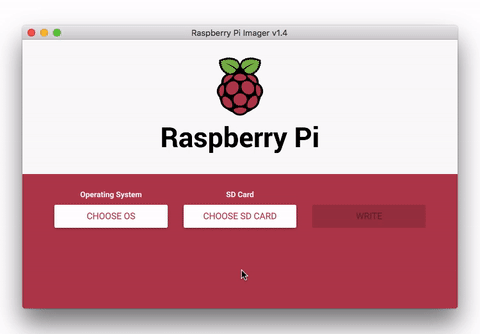Gymnasticon enables the obsolete Flywheel Home Bike to work with Zwift and other training apps. Support for other bikes can be added easily.
The original Peloton Bike is now supported. Support requires a serial to USB adapter and custom wiring via RCA cables or through terminal blocks. For more details on setting up the hardware, see the PR notes.
Note: Peloton Bike+ is currently unsupported as it uses a USB-C connection and a (most likely) proprietary communications protocol.
- Flywheel (tested)
- Peloton Bike (Original)
- LifeFitness IC5 (probably works)
- Zwift
- TrainerRoad (only briefly)
- Rouvy (only briefly)
- Raspbian Buster on Raspberry Pi Zero W
- Raspbian Buster on Raspberry Pi 4
- macOS 10.13, 10.15 (see #4)
Note: If using a Bluetooth LE bike (e.g. Flywheel) a Bluetooth LE 4.1+ adapter with multi-role capability is required.
This is the easiest way to get up and running on a Raspberry Pi.
Prerequisites:
- A Raspberry Pi Zero W or Raspberry Pi 4
- A compatible micro-SD card (8GB+)
- Access to a computer with an SD card slot
- A program to write SD card images like Raspberry Pi Imager or
dd(1)
Steps:
- Download the latest Gymnasticon SD card image
- Write the image to the SD card using Raspberry Pi Imager or
dd - Insert the SD card in the Raspberry Pi, power it up and wait a minute
- Start pedaling and Gymnasticon should appear in the Zwift device list
Optional extra steps:
- Setup networking and remote access so you can check logs, perform upgrades, and do clean shutdowns, etc.
Note: It's easiest to leave the Raspberry Pi plugged in once it's set up. Safely shutting it down requires first logging in and halting the system at the command-line with
sudo halt.
Try the Quick Start first. Otherwise read on for how to install Gymnasticon and its dependencies manually.
Dependencies:
-
Node.JS 12.16.1+
-
On Linux (including Raspberry Pi)
sudo apt-get install libudev-dev(required by node-bluetooth-hci-socket)
Note: Your user must have permission to access the Bluetooth adapter and advertise services.
Install:
npm install -g gymnasticon
gymnasticon
To run as an unprivileged user:
# this gives cap_net_raw+eip to all node programs not just gymnasticon
sudo setcap cap_net_raw+eip $(eval readlink -f $(which node))
To run at boot time, restart on exit and to avoid giving cap_net_raw+eip to the node binary it is recommended to run under systemd. See the deploy/gymnasticon.service from this repository for an example systemd unit file.
sudo cp gymnasticon.service /etc/systemd/system
sudo systemctl enable gymnasticon
sudo systemctl start gymnasticon
To view the output of Gymnasticon running under systemd:
journalctl -u gymnasticon -f
$ gymnasticon --help
__o
_ \<_
(_)/(_)
Gymnasticon
v1.2.0
usage: gymnasticon [OPTIONS]
Options:
--config <filename> load options from json file [string]
--bike <type>
[string] [choices: "flywheel", "peloton", "bot", "autodetect"] [default:
"autodetect"]
--bike-connect-timeout <seconds> [number] [default: 0]
--bike-receive-timeout <seconds> [number] [default: 4]
--bike-adapter <name> for bike connection [default: "hci0"]
--flywheel-address <macaddr>
--flywheel-name <name>
--peloton-path <path> usb serial device path
[string] [default: "/dev/ttyUSB0"]
--bot-power <watts> initial bot power [number]
--bot-cadence <rpm> initial bot cadence [number]
--bot-host <host> for power/cadence control over udp [string]
--bot-port <port> for power/cadence control over udp [number]
--server-adapter <name> for app connection [default: "hci0"]
--server-name <name> used for Bluetooth advertisement
[default: "Gymnasticon"]
--server-ping-interval <seconds> ping app when user not pedaling
[number] [default: 1]
--ant-device-id <id> ANT+ device id for bike power broadcast
[number] [default: 11234]
--power-scale <value> scale watts by this multiplier
[number] [default: 1]
--power-offset <value> add this value to watts [number] [default: 0]
--version Show version number [boolean]
-h, --help Show help [boolean]
git clone https://github.com/ptx2/gymnasticon.git
cd gymnasticon
npm link
It should be trivial to add support for other proprietary bikes, so long as there is a means of getting realtime-ish cadence/power data from them.
- Implement a bikeclient in src/bikes
- Add cli options to src/app/cli-options
- Add function to instantiate the bikeclient with the cli options to src/bikes/index.js
MIT
Read the development notes here.
